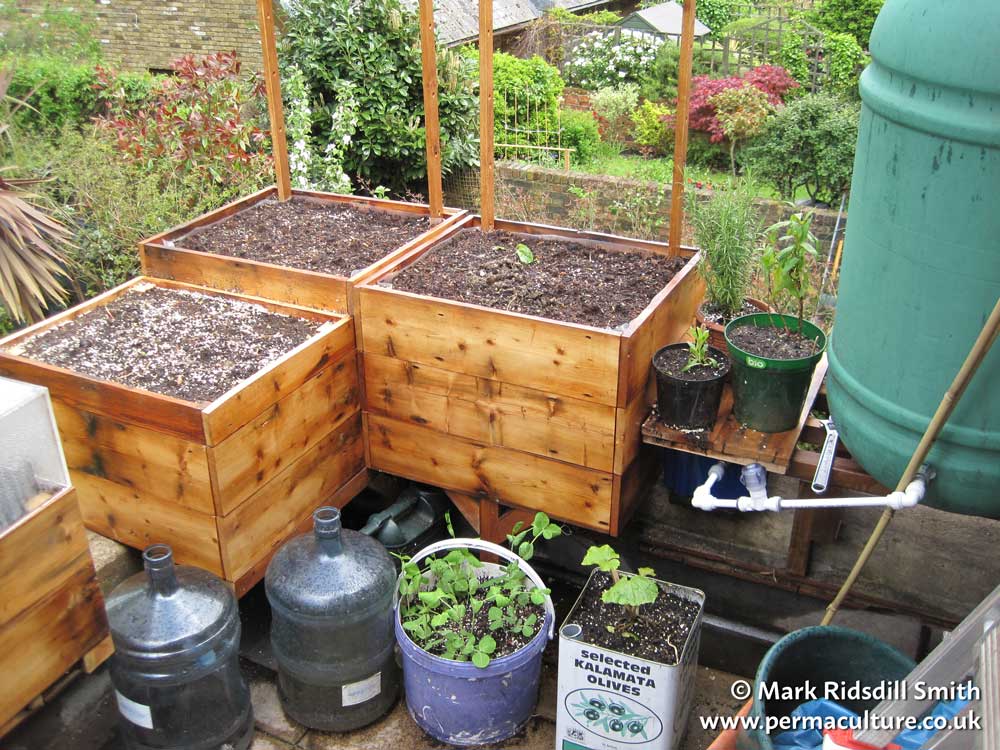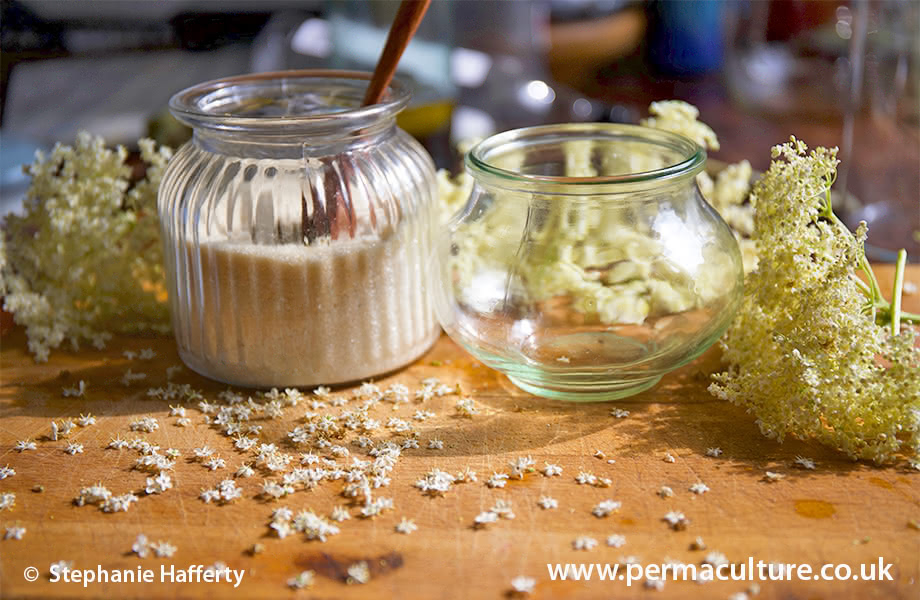Written into our history is the horror of the Irish Potato Famine, when a nation of working people’s diet was almost exclusively provided by a variety of potato which failed. Another dramatic example of the poverty of monoculture was the American Dust Bowl of the 1930s, when arable farming laid waste the delicate ecological balance of the mid-West and made a generation homeless.
In a sustainable design, important functions are supported by more than one element. The more elements there are to support an individual function, the more stable and safe the overall system will be in the event of any one element failing.
For the gardener this principle means diversity, many varieties. If we have space, we rarely plant one variety of annual vegetable and if we do, it is usually backed up by another entirely different annual that crops at the same time. Better still, find perennials or self-seeders to compliment the annual and sow them only once!
In our garden we mix and match as many crops as possible. We do grow plants like lettuce, rocket, beetroot and tomatoes for the salad bowl. We also back up these crops with almost year-round growing of plants like Egyptian and Welsh onions, sweet cicely, land cress, claytonia, numerous culinary herbs, oriental vegetables, Campanula versicolor and corn salad. By mixing conventional annuals with self-seeders and perennials and growing plants inside the conservatory/living space as well as ones that crop outside in winter, we ensure a variety of fresh food all year round. In addition, having tree crops, bush fruit, fruit and nuts from the hedgerow, an annual vegetable garden, a growing selection of perennial vegetables that ensures that our food supply is supported by many elements. And there is always the local veggie box scheme in times of need…
House design too can demonstrate this permaculture principle. A conventional house is usually heated by either gas or oil and has little insulation. If the central heating breaks down or prices rise dramatically, there are few alternatives beside electricity. Our house is a 19th century flint cottage that has been renovated. It is heated by a highly efficient gas condensing boiler, a dual combustion energy efficient woodburning stove and passive solar heating. The south-westerly aspect of the house has been redesigned to take advantage of the heat of the sun by adding a conservatory/living space built from local douglas fir and double glazed with low ‘e’ argon filled glazing.
The house also conserves energy by being highly insulated in loft and wall spaces, by using high quality storm-proof argon filled windows and by using thermally insulating blinds in the glazed south-westerly aspect to limit heat loss at night and on cloudy winter days. The house is warm in winter but does not overheat in summer due to good passive solar design and the blinds, reducing our heating bills significantly. We also have evacuated solar tubes on the roof this year to heat our water.
There is much more that we can do in the creation of an ecological design. We intend to replace our old secondary woodburner with another dual combustion model with a back boiler to heat water and add to the loft insulation. This will heat the house and the water and when we do this we can switch off the gas entirely.
Water, once taken for granted in temperate climates, is becoming scarcer in many places as climate change becomes a reality. We have this odd juxtaposition of drought and flood that is ever more unpredictable. Before we even started thinking about seperate supplies using rainwater to flush toilets and potable drinking water, we thought how we could use less water altogether. Domestically, there are many ways of conserving and harvesting water rather than relying on the one source out of the tap. In the house, water is conserved by obvious changes in habits like not running taps when we clean our teeth, not using a dishwasher and using an energy efficient washing machine which uses a spray system to rinse clothes. We harvest urine in a simple bucket and diluted and put on our vegetable garden or in the compost heap. We also use mulch to conserve moisture in the garden and water it with washing water as well as rainwater. We have a 1000 litre rainwater harvesting tank by our vegetable garden plus numerous 80 litre barrels dotted by downpipes in the front and back garden.
The rationale for diversifying sources for food, heat and water is to save money and resources, develop resilience and reduce our carbon emissions. Whilst our political leaders ignore the coming climate crisis and the planet continues to heat, we continue to implement as energy efficient and multi-functional designs as much as we can whilst encouraging others to do the same with our publishing work. It seems like the sanest thing we can do.
Maddy Harland is the co-founder and editor of Permaculture magazine and author of Fertile Edges – Regenerating the land, culture and hope.











